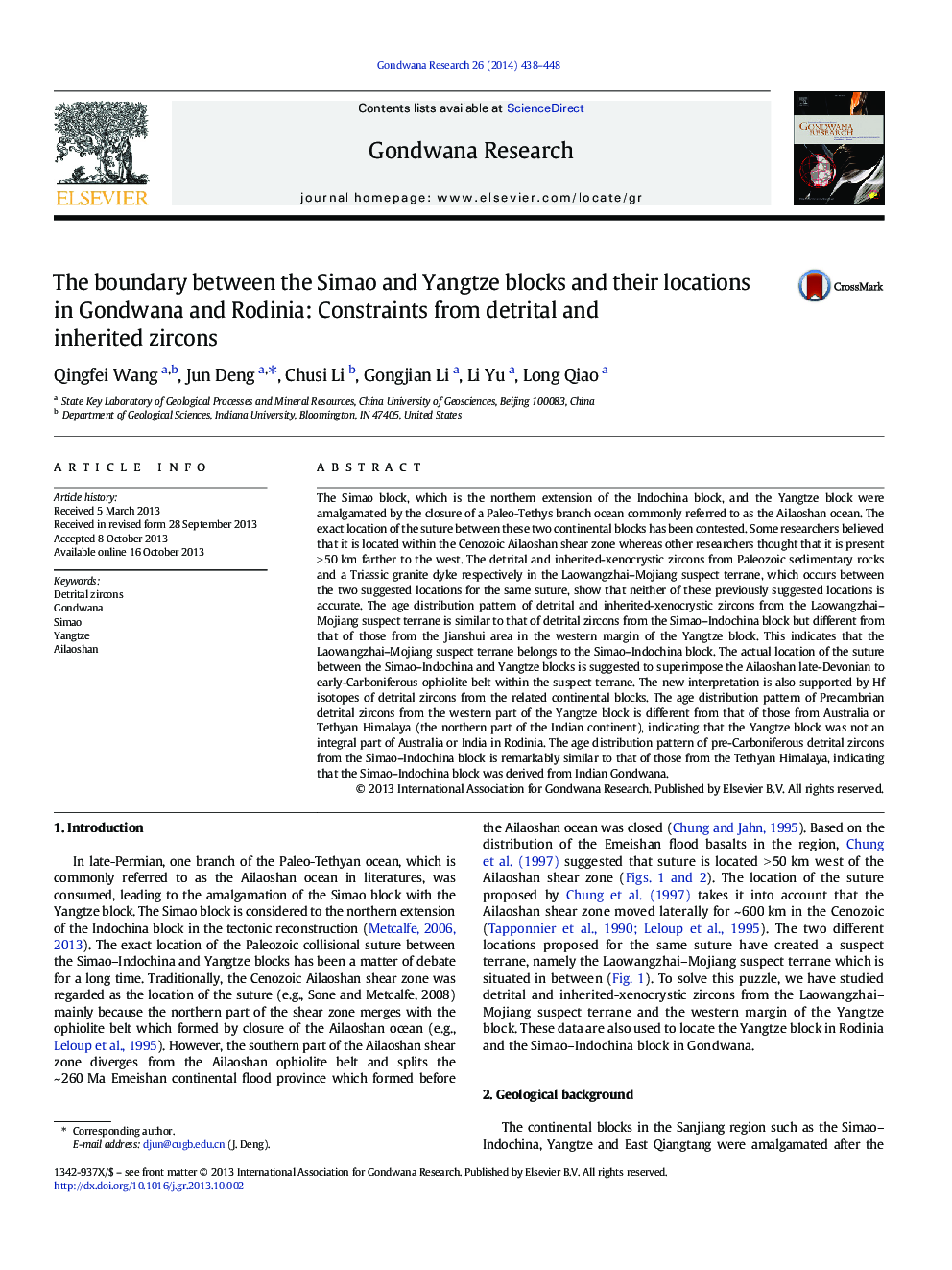| Article ID | Journal | Published Year | Pages | File Type |
|---|---|---|---|---|
| 4727280 | Gondwana Research | 2014 | 11 Pages |
•New location for the Ailaoshan suture is placed within the ophiolite belt.•The Yangtze block was separated from India and Australia in Rodinia.•The Simao–Indochina block was derived from the Indian Gondwana.
The Simao block, which is the northern extension of the Indochina block, and the Yangtze block were amalgamated by the closure of a Paleo-Tethys branch ocean commonly referred to as the Ailaoshan ocean. The exact location of the suture between these two continental blocks has been contested. Some researchers believed that it is located within the Cenozoic Ailaoshan shear zone whereas other researchers thought that it is present > 50 km farther to the west. The detrital and inherited-xenocrystic zircons from Paleozoic sedimentary rocks and a Triassic granite dyke respectively in the Laowangzhai–Mojiang suspect terrane, which occurs between the two suggested locations for the same suture, show that neither of these previously suggested locations is accurate. The age distribution pattern of detrital and inherited-xenocrystic zircons from the Laowangzhai–Mojiang suspect terrane is similar to that of detrital zircons from the Simao–Indochina block but different from that of those from the Jianshui area in the western margin of the Yangtze block. This indicates that the Laowangzhai–Mojiang suspect terrane belongs to the Simao–Indochina block. The actual location of the suture between the Simao–Indochina and Yangtze blocks is suggested to superimpose the Ailaoshan late-Devonian to early-Carboniferous ophiolite belt within the suspect terrane. The new interpretation is also supported by Hf isotopes of detrital zircons from the related continental blocks. The age distribution pattern of Precambrian detrital zircons from the western part of the Yangtze block is different from that of those from Australia or Tethyan Himalaya (the northern part of the Indian continent), indicating that the Yangtze block was not an integral part of Australia or India in Rodinia. The age distribution pattern of pre-Carboniferous detrital zircons from the Simao–Indochina block is remarkably similar to that of those from the Tethyan Himalaya, indicating that the Simao–Indochina block was derived from Indian Gondwana.
Graphical abstractFigure optionsDownload full-size imageDownload as PowerPoint slide
